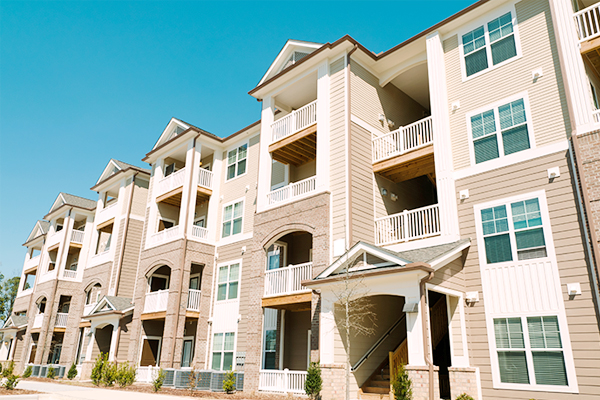
Glossary of Frequently Used Terms
Co-Insurance
In property insurance, Coinsurance is a penalty imposed on the insured by the insurance carrier for underreporting/declaring/insuring the value of the tangible property or business income. It also applies without concealment for the insured to bear some responsibility and thus reduce moral hazard. The penalty equates to a percentage stated within the policy and the amount underreported.
As an example: A buildings replacement cost valued at $1,000,000 has an 80% coinsurance clause but is insured for only $750,000. Since its insured value is less than 80% of its replacement value, the insurance payout will be subject to the underreporting penalty when it suffers a loss. For example, if it suffers a $200,000 loss, the insured would recover $750,000 ÷ (0.80 × 1,000,000) × 200,000 = $187,500 (less any deductible). In this example, the underreporting penalty would be $12,500. More generally, suppose a building with replacement cost R covers the amount I, with a coinsurance requirement c, expressed as a number between 0 and 1 (e.g., 0.8 for an 80% coinsurance clause). If this building suffers a loss L, then the insurance payout (fewer deductibles) would be the smallest of the three amounts, L, I, and IL/(cR). The first two alternatives reflect the fact that the payout will not exceed the loss nor the coverage amount of the building, while the last amount represents the intended action of the coinsurance requirement to penalize underreporting.
The most commonly issued coinsurance percentage would be 80%, but it can be as high as 100%, which would impose the greatest penalty for underreporting. Thus, the property values need to be accurately reported and updated annually to reflect inflation and other increases in cost.
Actual Cash Value
In the property and casualty insurance industry, Actual Cash Value (ACV) is a method of valuing insured property or the value computed by that method. Actual Cash Value (ACV) is not equal to replacement cost value (RCV). ACV computes by subtracting depreciation from replacement cost.[1] The depreciation usually calculates by establishing a useful life of the item, determining what percentage of that life remains. This percentage multiplied by the replacement cost equals the ACV. For example, a man purchased a flatscreen for $2,000 five years ago, which was destroyed in a hurricane. His insurance company says that all televisions have a useful life of 10 years. A similar television today costs $2,500. The destroyed television had 50% (5 years) of its life remaining. The ACV equals $2,500 (replacement cost) times 50% (useful life remaining) or $1,250. This concept is different from the book value used by accountants in financial statements or for tax purposes. Accountants use the purchase price and subtract the accumulated depreciation to value the item on a balance sheet. ACV uses the current replacement cost of a new item.
Replacement Cost
The amount it would cost to replace an asset at current prices. Suppose the cost of replacing an asset in its current physical condition is lower than replacing the asset to obtain the level of services enjoyed when initially purchased. In that case, the asset is in poor condition, and the firm would probably not want to replace it.
Inland-Marine
Scheduled Personal Property endorsement used to insure Personal Property with high values such as furs, antiques, and jewelry.
Blanket Insurance
A single property insurance policy that provides coverage for multiple classes of property at one location or provides coverage for one or more classes of property at multiple locations.
Umbrella Liability
Coverage that provides extra protection against liability, and excess amount of insurance above the primary policy.
Split Limit
Separately stated limits of liability for different coverages, which may be stated on a per person limit, per occurrence, property damage limit. The state of Indiana has a basic $25,000/$50,000/ $10,000 split limit policy.
Monoline Policy
Policy written separately as a single coverage.
Underinsured Motorist
Coverage in an automobile insurance policy under which the insurer will pay costs up to specified limits for bodily injury if the liable driver’s policy limits are exhausted, and they cannot pay the full amount for which they are liable.
Uninsured Motorist
Coverage that allows the named insured, resident relative(s), and passengers in a covered auto to collect sums another driver would be legally liable to pay for bodily injury resulting from an auto accident, providing the accident was caused by an uninsured motorist, a hit-and-run driver or a driver whose insurance company is insolvent.
Inflation Guard
A coverage extension that automatically increases amounts of insurance on buildings by an agreed upon percentage annually.
First-Named Insured
An individual whose name appears first on the policy’s declaration.
Additional Insured
Individuals or Business that are not named as insured on the declaration page, but are protected by the policy, usually in regard to a specific interest.



















